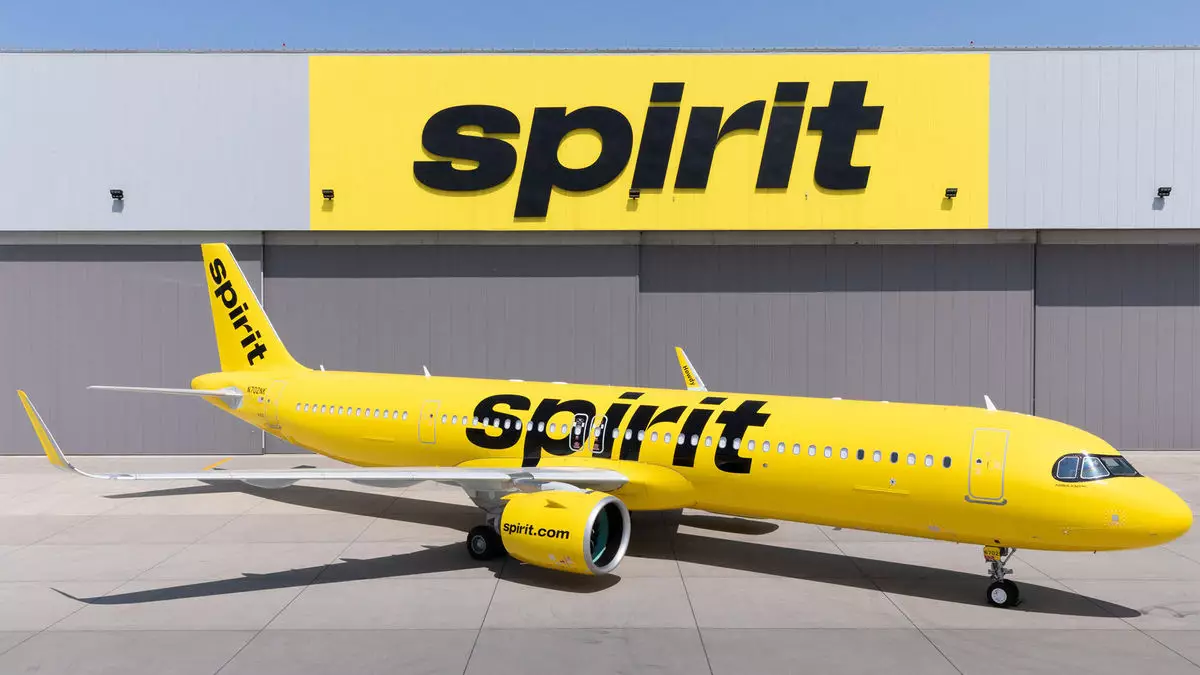In a move that reflects a broader struggle within the airline industry, Spirit Airlines has initiated a prearranged Chapter 11 bankruptcy process, a decision aimed at reshaping its financial future amidst challenging market conditions. While Spirit is optimistic about this restructuring as a pathway to long-term success, industry analysts are less enthused, suggesting that the airline may have limited time to restore profitability. Industry expert Francois Duflot from Bloomberg Intelligence characterized the situation as urgent, indicating that Spirit may only have several quarters—rather than years—to enact meaningful changes.
The restructuring agreement disclosed on November 18 marks a significant pivot in Spirit’s financial strategy. This deal entails converting $795 million of its debt into equity for existing bondholders, alongside a commitment for new equity investments totaling $350 million. Additionally, a $300 million loan from bondholders aims to enhance Spirit’s cash reserves. If approved by the court, this restructuring could ultimately reduce Spirit’s financial obligations significantly, converting approximately $1.6 billion in impending debt due by September 2026 into a more manageable $840 million due in 2030. Nevertheless, this course of action will effectively deprive Spirit’s shareholders of their equity stake, highlighting the precariousness of the airline’s current condition.
Despite the complexities associated with its Chapter 11 proceedings, Spirit has reassured customers that operational services will remain intact, including the continuation of flight credits and loyalty points. The airline expressed intentions to emerge from bankruptcy stronger and better equipped to offer value to its customers, citing examples of other airlines that have undertaken similar restructuring processes with success.
Spirit’s position has deteriorated markedly since the pandemic, with declining consumer preferences for ultra-low-cost carriers leading to nearly $2 billion in losses since 2020. Recent analyses reveal an alarming third-quarter operating margin of -27%, indicating severe financial distress. The company’s prior strategy for recovery—a $3.8 billion merger with JetBlue—was thwarted by antitrust scrutiny, forcing Spirit to recalibrate its approach.
In a bid to rejuvenate its appeal, Spirit has introduced various initiatives including new fare bundles, priority check-in, and operational cuts, such as a 20% reduction in flights and pilot furloughs. Recently, the airline also secured a $519 million deal to sell off 23 Airbus aircraft, with these funds presumably intended to bolster its financial position during the restructuring process.
Spirit’s efforts to recover have been matched by a rebranding strategy aimed at attracting a more diverse customer base, particularly those willing to pay a premium for enhanced services. The airline has proposed introducing free Wi-Fi for members of its loyalty program and implementing snack services across all flights. Despite these changes, experts express skepticism about Spirit’s ability to shift consumer perceptions, which have long associated the airline with low-cost, no-frills travel.
Scott Keyes, founder of the flight-bargain subscription service Going, noted that Spirit may struggle to shed its long-standing reputation as a budget airline, especially in the face of growing consumer demand for premium travel experiences. Keyes articulated the challenge of overcoming negative first impressions, suggesting that previous perceptions of Spirit will hinder its rebranding efforts.
Moreover, analysts predict that while acquiring a partner like Frontier or JetBlue could be a future path, Spirit must prioritize turning its financial situation around to avoid liquidation. The urgency becomes critical as the airline expects to have about $840 million in liquidity at the end of 2024, which could quickly evaporate if it fails to halt losses. George Ferguson from Bloomberg also highlighted the necessity for airlines to maintain liquidity equivalent to 20% of their annual revenues, a challenge Spirit needs to tackle post-bankruptcy.
Looking ahead, Spirit may find some relief through anticipated cash payments from its engine manufacturer, Pratt & Whitney. This support could offer temporary financial breathing room but is likely insufficient to address the deeper, systemic issues affecting the airline’s business model.
The complexities surrounding Spirit Airlines’ Chapter 11 filing reveal both immediate challenges and an uncertain future. While Spirit is attempting to navigate this turbulent period with a strategic restructuring plan and customer service initiatives, the road to recovery will be fraught with difficulties. The airline must act swiftly to alter its financial trajectory before dwindling liquidity forces harsher outcomes. Only time will determine whether restructuring efforts will realize their intended benefits or if Spirit will face a grim reality of consolidation or liquidation.


Leave a Reply